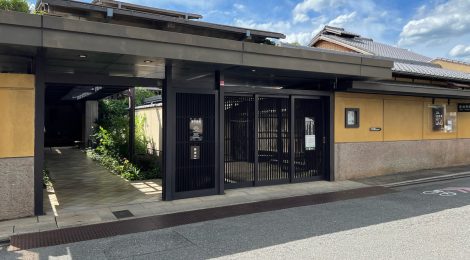
Raku Museum
Traditional and distinctive Japanese pottery
For a taste of true Japanese craftsmanship, a visit to the Raku Museum in Kyoto’s Nishijin district is a must. This museum showcases a unique pottery style known as Raku, which is named after the family that invented it. If you have an appreciation for ceramics, this museum should definitely be on your itinerary.
The Raku Museum is conveniently accessible by bus. From Kyoto Station, you can take bus 50 to the Horikawanakatachiuri Bus Stop, which is just a short two-minute walk away from the museum. The ease of transportation makes it convenient for visitors to reach this cultural gem.
Raku pottery is a traditional Japanese art form that is characterized by its distinctive hand-kneaded technique. Unlike other pottery styles that are created on a potter’s wheel, Raku pottery is formed using a unique hand-kneading technique. The pieces are then fired in a low-temperature kiln, which gives them their unique and beautiful imperfections.
One of the defining characteristics of Raku-ware is its irregular shape and uneven edges. This adds to its charm and makes each piece truly one-of-a-kind. Raku pottery is often used in traditional tea ceremonies, particularly as the principal tea bowl. Its rustic and imperfect appearance adds to the overall aesthetic and experience of the tea ceremony.
The history of Raku pottery dates back 450 years to the first generation of the Raku family, Chojiro Raku. He was the originator of this pottery style and his tea bowls serve as the spiritual axis for successive generations of the Raku family. The family continues to create new tea bowls, carrying on the tradition and legacy of their ancestor.
The Raku Museum is located in the residential neighborhood of the Nishijin district in central Kyoto. This district is known for its rich cultural heritage and traditional crafts. The museum, which opened its doors in 1978, houses an impressive collection of Raku pottery pieces that belong to the Raku family.
The exhibits at the museum are ever-changing, offering visitors a chance to see different pieces from the family’s collection. The museum usually provides English captions for the exhibits, making it accessible to international visitors. It is advisable to check the official website for the latest information on the exhibits, as they may vary throughout the year.
Visiting the Raku Museum not only allows you to appreciate the beauty of Raku pottery, but it also provides a glimpse into the rich history and craftsmanship of Japanese ceramics. The museum offers a unique and immersive experience for art enthusiasts and those interested in Japanese culture. It is a place where tradition and art come together, showcasing the beauty and uniqueness of Raku pottery.
In addition to the Raku Museum, Kyoto offers a wealth of cultural and historical attractions. From ancient temples and shrines to beautiful gardens and traditional tea houses, there is something for everyone in this historic city. Exploring the streets of Kyoto is like stepping back in time, with its preserved traditional architecture and rich cultural heritage.
When planning your visit to Kyoto, be sure to allocate enough time to explore the city’s various districts and attractions. Each district has its own unique charm and offers a different perspective on Japanese culture. Whether you’re interested in traditional crafts, history, or nature, Kyoto has something to offer.
Some other recommended attractions in Kyoto include the Nishijin Textile Center and Orinasukan. The Nishijin Textile Center showcases the traditional art of Nishijin weaving, which has been a part of Kyoto’s cultural heritage for centuries. Visitors can learn about the intricate process of creating traditional Japanese textiles and even try their hand at weaving.
Orinasukan is another must-visit attraction in Kyoto. This museum showcases the art of traditional Japanese dolls and provides a fascinating insight into the world of doll making. The museum features a wide range of dolls, from traditional to contemporary, and offers workshops where visitors can learn the art of doll making.
In conclusion, the Raku Museum in Kyoto’s Nishijin district is a treasure trove for lovers of traditional Japanese pottery. The museum showcases the unique Raku pottery style, which is known for its hand-kneaded technique and low-temperature firing. A visit to this museum allows visitors to appreciate the beauty and imperfections of Raku-ware while also gaining insight into the rich history and craftsmanship of Japanese ceramics.
Kyoto, with its numerous cultural and historical attractions, is a city that offers a truly immersive experience in Japanese culture. From ancient temples and shrines to traditional crafts and tea ceremonies, Kyoto has something for everyone. Exploring the city’s various districts and attractions allows visitors to gain a deeper understanding of japan‘s rich cultural heritage.
When planning your trip to Kyoto, be sure to include the Raku Museum and other recommended attractions on your itinerary. Immerse yourself in the world of traditional Japanese pottery, textiles, and dolls, and discover the beauty and craftsmanship that define these art forms. Kyoto awaits with its rich history, cultural heritage, and unparalleled beauty.
Address And Maps Location:
Aburahashizume-cho, Kamigyo-ku, Kyoto-shi, Kyoto-fu
Subscribe, follow @idbcpr and idbackpacker.com